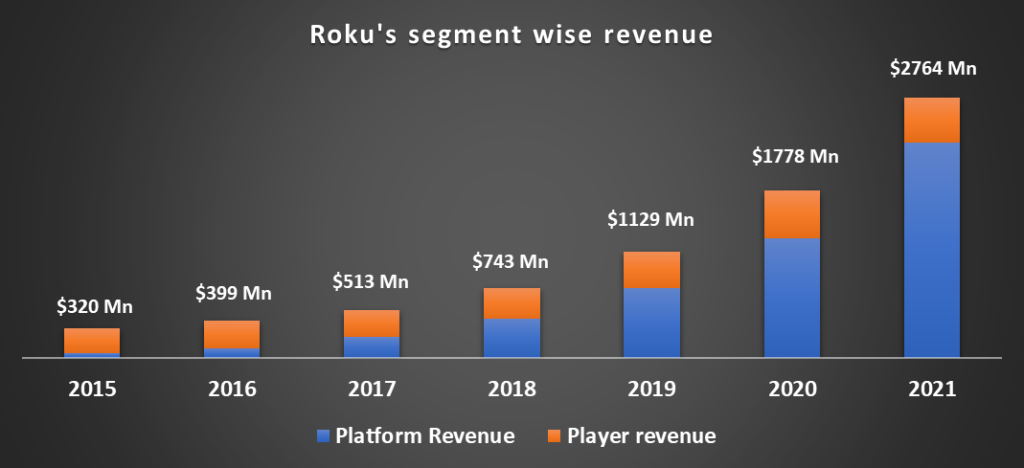The rapid adoption of TV streaming has disrupted the traditional linear TV distribution model, creating new options for consumers and new economic opportunities for content publishers and advertisers. OTT viewing has become mainstream in the United States.
When ad-supported TV is streamed, it creates an opportunity for content publishers and advertisers to use advanced digital advertising capabilities, such as one-to-one personalized delivery.
TV streaming is now mainstream, and consumers spend more time watching streaming services, with many ‘cutting the cord’ from legacy TV services entirely. As per Neilson’s State of Play report, of the 4 hours, 49 minutes per day that the average American spends watching content, 1:22 of that is connected TV (CTV).
Over the past several years, nearly every major media company has entered TV streaming and launched streaming services. Advertisers looking to reach and engage with streaming audiences are increasingly taking advantage of the benefits inherent to the digital advertising capabilities of TV streaming platforms.
TV streaming’s disruptive content distribution model is shifting billions of dollars of economic value. Roku is capitalizing on this immense economic opportunity for a leading TV streaming platform for users, content publishers, and advertisers and is building a business model for the ecosystem.
According to Pixalate’s latest release in CTV trends in March 2022, Roku remains the dominant CTV device leader in North America with ~50% market share.
So as strategy enthusiasts, we decided to break down the business model & marketing strategy of Roku. We will also learn how Roku makes money and who are its major competitors.
Roku Overview and how does Roku work?
Roku, founded in 2002, is a brand of hardware digital media players. Roku offers access to streaming media content from online services and is on a mission to be the global TV streaming platform that connects and benefits the entire TV ecosystem of consumers, content publishers, and advertisers. As of July 2022, Roku had 63.1 million active accounts.
The first Roku model, developed in collaboration with Netflix, was introduced in May 2008. Roku devices have popularized the concept of low-cost, small-form-factor set-top boxes for over-the-top media consumption.
Roku connects consumers to the entertainment they love, enabling content publishers to build and monetize large audiences and providing advertisers with unique capabilities to engage consumers.
Roku works on its proprietary OS, which is purpose-built for TV and designed to run on low-cost hardware, allowing Roku to manufacture and sell affordable streaming players.
Roku TV models and streaming players enable consumers to access a wide selection of content by connecting their Roku device to its streaming platform via a home broadband network.
Roku has built an ecosystem where
- consumers can discover and access a wide variety of streaming content,
- Content publishers can reach a wide userbase and utilize data insight tools,
- advertisers can serve targeted and measurable ads to the TV viewers that they want to reach,
- RokuTV brand partners can build market share by offering high-performance smart TVs in a range of sizes and price points, and
- Retailers can offer customers Roku’s highly-rated streaming devices online and in stores.
Growth in active accounts and hours streamed has attracted more content publishers and advertisers to Roku’s TV streaming platform, creating a better user experience and attracting more users.
How does Roku make money? What is the business model of Roku?
Roku’s business model is designed to fulfill the needs of the participants in the TV streaming ecosystem: consumers, content publishers, advertisers, TV brand partners, other device licensees, and retailers.
Value Proposition
Customers: Consumers get a better user experience, more entertainment options, and more control over what they spend on content. Customers get access to over 500,000 movies and TV episodes in the United States, as well as live sports, music, news, and more.
Users can also compare the content price from various channels on its platform and choose from ad-supported, subscription, and transactional video-on-demand content.
Ad-supported channels available on the Roku platform include CBS News, Crackle, The CW, and Vice; subscription channels include HBO Now, Hulu, and Netflix, as well as traditional pay TV replacement services like DirecTV Now, Sling TV, and Sony PlayStation Vue; and transactional channels include Amazon Video, Google Play, and Vudu.
Content Publishers & Advertisers: Content publishers have direct access to a large, growing, engaged user base and monetization opportunities. Advertisers can show ads that are more relevant, interactive, and measurable than advertising delivered on traditional linear TV.
As traditional TV audiences shrink, OTT audiences have become increasingly important to advertisers who must continue to reach large audiences.
Growth levers of the business model of Roku
Scale- Increasing the number of active accounts: Roku’s strategy is to make access to TV streaming affordable in part by offering a lineup of stand-alone streaming players that connect to a user’s TV.
- To provide a better audio experience, Roku Streambars is a streaming player that enables the soundbar to connect to Roku’s streaming platform along with Roku wireless speakers and subwoofers.
- Roku OS is licensed to TV brand partners and specific international TV and telecommunications service operators that manufacture and sell co-branded Roku TV models. They integrate the Roku OS to enable essential TV functions and connect to Roku’s TV streaming platform.
How does Twitch make money | Business Model
Engagement- Growing streaming hours: In 2021, Roku streamed 73.2 billion hours through Roku streaming players. Roku leverages insights from customers’ behavior to develop actionable insights such as content recommendations to improve users’ experience.
- The Roku Channel is Roku’s streaming channel that drives user engagement by providing users with free, ad-supported access to an extensive library of movies. It shows on-demand, live-streaming linear channels, original content, and subscription video-on-demand (“SVOD”) content made available through Premium Subscriptions on The Roku Channel.
- Roku Brand Studio helps marketers go beyond the traditional 30-second TV ad spot and offer more innovative ad experiences, such as sponsored ads in our user interface, interactive video ads, branded content series, and more.
How does Roku make money: revenue model
Roku generated $2.7 billion in 2021. Roku makes money primarily through segments: Player and Platform.
Player Revenue: In this segment, Roku makes money from selling streaming players through consumer retail distribution channels, including major brick-and-mortar retailers, such as Best Buy and Walmart, and online retailers, primarily Amazon.com.
In international markets, Roku sells its players through wholesale distributors, which, in turn, sell to retailers. The player segment contributed 17% to Roku’s revenue in 2021.
Player revenue decreased by 6% in 2021 compared to 2020, primarily due to a decrease in both the volume of streaming players sold and average selling prices, offset by a slight increase in revenue from the sale of audio products and accessories.
Platform Revenue: In this segment, Roku makes money from advertising sales, subscription and transaction revenue share, sales of branded channel buttons on remote controls, and licensing arrangements with TV brands and service operators.
Roku’s video ad inventory includes native display ads and ad inventory made available through content publishers. OneView is the ad-buying platform built for TV streaming. Advertisers use OneView to independently set up, make changes, and measure ad campaigns. The platform segment contributed 83% to Roku’s revenue in 2021.
Platform revenue increased by 80% in 2021 compared to 2020 due to higher content distribution services, including higher revenue from media and entertainment promotional spending and Premium Subscriptions, as well as higher advertising revenue.

What is the marketing strategy of Roku? Who are the competitors of Roku?
Marketing Strategy of Roku
s part of its marketing strategy, Roku engages in various marketing activities to continuously drive active account growth, engagement, and monetization.
These marketing activities primarily focus on building and expanding relationships with content publishers, advertisers, TV brands, retailers, and service operators and driving sales of Roku’s streaming players and audio products and Roku TV models to consumers through retail distribution channels.
In the United States, the majority of Roku’s streaming players, audio products, and Roku TV models are sold through traditional brick-and-mortar retailers, such as Best Buy, Target, and Walmart, including their online sales platforms, and online retailers such as Amazon, and to a lesser extent Roku’s website.
Competitors of Roku
The TV streaming industry is highly competitive. Roku competes with larger companies with resources and brand recognition that pose significant competitive challenges.
Roku’s competitors include:
- Companies that offer TV streaming devices and companies that license their operating systems for integration into smart TVs;
- TV brands that offer their own TV streaming solutions within their TVs and well as other devices such as game consoles, DVD players, Blu-ray players, and set-top boxes that leverage their operating systems;
- Mobile streaming platforms that enable users to stream content on phones and tablets;
- Companies that produce and aggregate TV streaming content
- Companies that offer advertisers the opportunity to reach consumers on other content and advertising mediums;
- Companies that offer users other sources for news and entertainment, including broadcast and cable television networks, newspapers and magazines, social networks, and video games.
How does DraftKings make money: Business Model & Marketing Strategy
Roku’s significant competitors are Amazon Fire TV, Chromecast, Apple TV, NVidia Shield TV, Hulu, and AT&T TV. Roku’s competitive advantages would depend on the following:
- ability to acquire users by delivering high-quality streaming devices at competitive prices,
- partnering with Roku TV brands to bring co-branded smart TVs to market, and
- developing and monetizing the streaming platform with compelling content, promotional services, and advertising
















